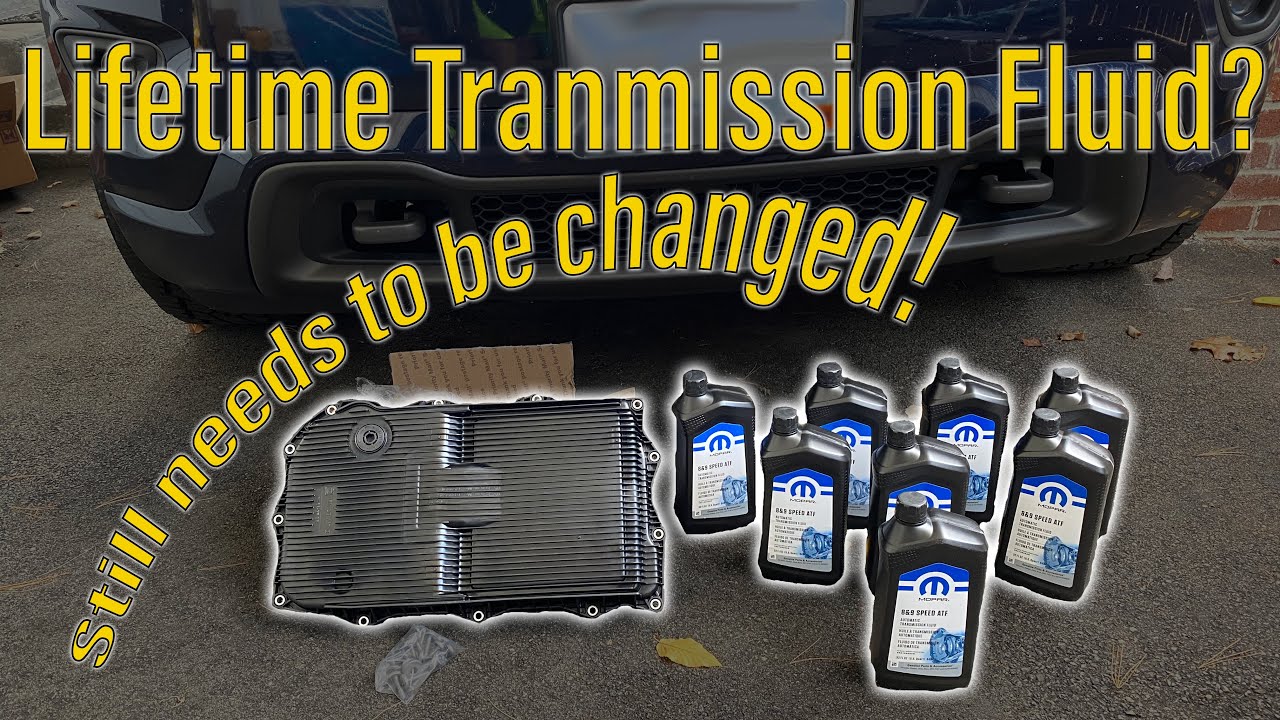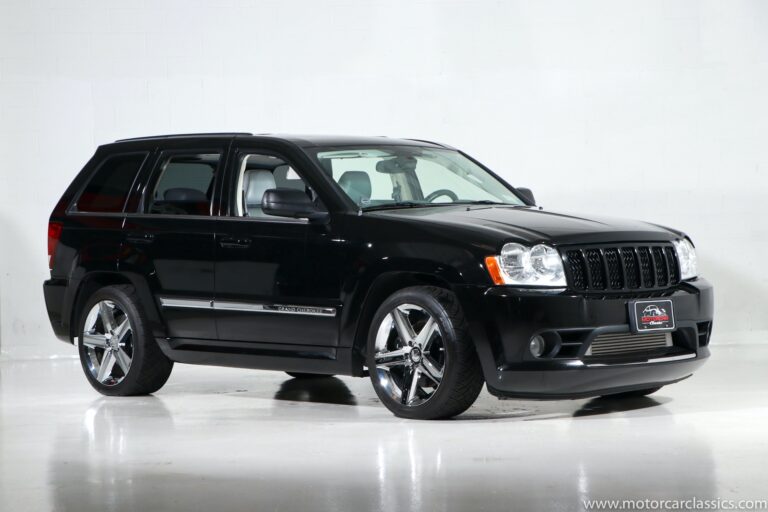Jeep Cherokee Transmission: A Comprehensive Guide to Its Heartbeat
Jeep Cherokee Transmission: A Comprehensive Guide to Its Heartbeat jeeps.truckstrend.com
The Jeep Cherokee, a name synonymous with adventure, capability, and American ruggedness, has traversed landscapes and generations, establishing itself as an icon in the SUV segment. At the very core of its ability to conquer both urban jungles and challenging off-road trails lies its transmission – a complex, vital component responsible for transferring power from the engine to the wheels. Understanding the Jeep Cherokee transmission is not merely about appreciating its mechanical genius; it’s about ensuring the longevity, performance, and reliability of your beloved vehicle. This comprehensive guide will delve into the various iterations of the Jeep Cherokee transmission, offering insights into its function, maintenance, common issues, and practical advice to keep your Cherokee moving forward.
I. A Legacy of Power Transfer: Understanding Jeep Cherokee Transmissions Through Generations
Jeep Cherokee Transmission: A Comprehensive Guide to Its Heartbeat
The evolution of the Jeep Cherokee transmission mirrors the vehicle’s journey from a utilitarian compact SUV to a more refined, technologically advanced crossover. Each generation introduced different transmission types, each with its own characteristics, strengths, and occasional quirks.
A. The XJ Era (1984-2001): Simplicity Meets Durability
The legendary XJ Cherokee, celebrated for its unibody construction and robust nature, predominantly featured two automatic transmissions and several manual options.
- AW4 Automatic Transmission: Manufactured by Aisin-Warner (a Toyota affiliate), the AW4 is widely regarded as one of the most durable and reliable automatic transmissions ever put into a mass-produced vehicle. It’s a 4-speed automatic that, despite its simplicity by modern standards, proved incredibly resilient. Its hydraulic design, minimal electronics, and robust construction made it a favorite among off-road enthusiasts for its ability to handle abuse.
- Manual Transmissions: Early XJs offered Borg-Warner T-4 and T-5 4- and 5-speed manuals. Later, the Aisin AX-5 (for 4-cylinder engines) and the highly regarded Aisin AX-15 (for 6-cylinder engines) became standard. These manual transmissions provided direct control and were known for their ruggedness.
B. The KJ & KK Liberty (2002-2012): Transition and Challenges
When the Cherokee name was retired in North America in favor of "Liberty," the transmissions evolved but also faced new challenges.
- 42RLE Automatic Transmission: This 4-speed automatic became the primary transmission for the KJ and early KK Liberty models, paired with the 3.7L V6 engine. While functional, it often drew criticism for being less robust than its AW4 predecessor, with common complaints about delayed shifts, overheating, and a general lack of refinement, especially when paired with the V6.
- 545RFE Automatic Transmission: Later KK Liberty models, particularly those with the larger 4.7L V8 engine (introduced in 2008), utilized the 5-speed 545RFE automatic transmission. This unit offered an extra gear and generally better performance than the 42RLE but was also known for its complexity.

C. The KL Era (2014-Present): Modernity and Complexity
The return of the "Cherokee" nameplate in 2014 brought a completely redesigned vehicle built on a Fiat-Chrysler platform, introducing a highly advanced, yet initially controversial, transmission.
- ZF 9HP48 (948TE) 9-Speed Automatic Transmission: This is the flagship transmission for the KL Cherokee, standard across most trims and engine options (2.4L Tigershark MultiAir I4, 3.2L Pentastar V6). While offering improved fuel economy and smoother power delivery due to its nine gears, it faced significant initial criticism for harsh shifts, delayed engagement, and software glitches. Subsequent software updates and design revisions have largely improved its performance, but its complexity remains a key characteristic.
- 6-Speed Manual (Rare): A 6-speed manual transmission was offered in some international markets, primarily with the 2.0L diesel engine, but it’s exceptionally rare in North America.

II. The Mechanics of Motion: How Jeep Cherokee Transmissions Work
Regardless of the specific model, the fundamental purpose of any Jeep Cherokee transmission is to convert engine power into usable torque for the wheels, allowing for varying speeds and power demands.
- Automatic Transmissions: These complex units use a torque converter to smoothly transfer power from the engine, planetary gear sets to achieve different gear ratios, a valve body to direct hydraulic fluid, and solenoids controlled by a Transmission Control Module (TCM) to actuate shifts. The TCM receives input from various sensors (speed, throttle position, engine load) to optimize shift points for performance and fuel efficiency.
- Manual Transmissions: These are simpler, relying on the driver’s input via a clutch pedal and gear shifter. The clutch temporarily disconnects the engine from the transmission, allowing the driver to select different gear ratios using synchromesh rings that match gear speeds for smooth engagement.
In 4×4 Jeep Cherokees, the transmission often connects to a transfer case, which allows the driver to select between 2WD, 4WD high-range, and 4WD low-range, further expanding the vehicle’s off-road capabilities by providing additional torque multiplication.
III. Common Transmission Issues and Warning Signs
Even the most robust Jeep Cherokee transmission can encounter issues. Recognizing the warning signs early can prevent more severe and costly damage.
- XJ AW4: While tough, common issues can include worn throttle position sensors (TPS) leading to erratic shifting, failing speed sensors affecting speedometer readings and shift points, and occasional solenoid failures causing specific gear engagement problems. Fluid degradation from neglect is also a factor.
- KJ/KK 42RLE: This transmission is more prone to overheating, especially with towing or heavy use, leading to premature fluid breakdown and internal wear. Delayed engagement, slipping, and harsh shifts are common, often linked to solenoid pack issues or valve body wear.
- KL 948TE: The 9-speed automatic is notorious for harsh or delayed shifts, particularly when cold or at low speeds. "Limp mode" (where the transmission locks into a higher gear to prevent damage) is a common diagnostic sign. Software glitches, clutch pack wear, and solenoid failures are also reported.
- General Warning Signs for Any Jeep Cherokee Transmission:
- Slipping Gears: Engine revs but the vehicle doesn’t accelerate proportionally.
- Delayed Engagement: A noticeable pause when shifting into Drive or Reverse.
- Harsh or Jerky Shifts: Abrupt changes between gears.
- Unusual Noises: Whining, clunking, or grinding sounds coming from the transmission area.
- Burning Smell: Often indicates overheating fluid.
- Fluid Leaks: Puddles under the vehicle, usually reddish-brown.
- Check Engine Light (CEL) or Transmission Warning Light: Diagnostic trouble codes (DTCs) related to the transmission.
IV. Maintaining Your Jeep Cherokee Transmission: A Practical Guide
Proactive maintenance is key to extending the life of your Jeep Cherokee transmission and preventing costly repairs.
-
Transmission Fluid Checks & Changes:
- Frequency: Consult your owner’s manual. For the AW4, 30,000-50,000 miles is often recommended. For the 42RLE, similar intervals, perhaps more frequently with heavy use. For the 948TE, intervals can be longer (60,000-100,000 miles or more, depending on usage), but always use the correct fluid.
- Fluid Type: This is CRITICAL. The AW4 uses Dexron III/Mercon. The 42RLE uses ATF+4. The KL 948TE requires ZF’s 8&9 speed specific fluid (Mopar P/N 68157995AA or equivalent ZF LifeGuardFluid 8). Using the wrong fluid can cause immediate and severe damage.
- Method: A "drain and fill" replaces only a portion of the fluid. Multiple drain and fills over time can refresh more. A "flush" uses specialized equipment to replace nearly all fluid but should only be performed by experienced technicians, especially on older, neglected transmissions, as it can dislodge debris.
- Level Check: Check fluid level on a warm engine, with the vehicle on a level surface, and with the transmission in Park (or Neutral, depending on model – consult manual).
-
Filter Replacement: Most automatic transmissions have an internal filter that should be replaced during fluid changes to ensure clean fluid circulation.
-
Transmission Cooling System: Ensure your transmission cooler (often integrated with the radiator or a separate unit) is free of debris and functioning correctly. Overheating is a silent killer of transmissions. Consider an auxiliary cooler if you frequently tow or off-road.
-
Driving Habits: Avoid rapid acceleration and deceleration, don’t shift into Drive or Reverse while the vehicle is still rolling, and allow the transmission to warm up in cold weather before putting it under heavy load.
-
Regular Inspections: Periodically inspect for fluid leaks, unusual smells, and listen for abnormal noises.
-
Software Updates (KL 948TE): For KL Cherokees, ensure your vehicle’s transmission control module (TCM) has the latest software updates. Many initial shift complaints were resolved through these updates.
V. Troubleshooting and Solutions
When problems arise with your Jeep Cherokee transmission, a systematic approach is best.
- DIY Checks: Start with the basics: check fluid level and condition. A low fluid level or burnt fluid can indicate significant problems. For XJ models, inspecting the TPS sensor for proper function can sometimes resolve shifting issues.
- Professional Diagnosis: For complex symptoms or persistent issues, professional diagnosis is essential. Technicians use specialized scan tools to read diagnostic trouble codes (DTCs) from the TCM, which can pinpoint sensor failures, solenoid issues, or internal component wear.
- Repairs vs. Replacement:
- Minor Repairs: Solenoid replacement, sensor replacement, valve body cleaning/repair can often be done without removing the entire transmission.
- Rebuild: If internal hard parts are worn, a rebuild involves disassembling the transmission, replacing worn clutches, bands, seals, and other components. This can be cost-effective for simpler units like the AW4 but complex for the 948TE.
- Remanufactured Transmission: A remanufactured unit is a transmission that has been fully rebuilt by a specialized facility to original factory specifications, often with upgrades to address known weaknesses. They typically come with a warranty.
- New Transmission: The most expensive option, often reserved for newer vehicles where a remanufactured unit isn’t available or if extensive internal damage makes rebuilding impractical.
- Aftermarket Solutions: For XJ Cherokees, heavy-duty torque converters, shift kits, and larger transmission coolers are popular upgrades for off-road or towing applications. For the KL 948TE, some aftermarket companies offer enhanced valve bodies or performance software, though these are less common due to the transmission’s complexity.
VI. Understanding Jeep Cherokee Transmission Pricing
The cost of addressing Jeep Cherokee transmission issues can vary significantly based on the specific model, the nature of the problem, parts costs, and labor rates in your region. Here’s an estimated price table for common services and repairs:
| Service/Component | Estimated Cost (Parts & Labor) | Notes |
|---|---|---|
| Diagnostics (Shop Fee) | $100 – $200 | Essential for accurate troubleshooting. Often applied to repair cost if work is done at the same shop. |
| Transmission Fluid & Filter Change |





